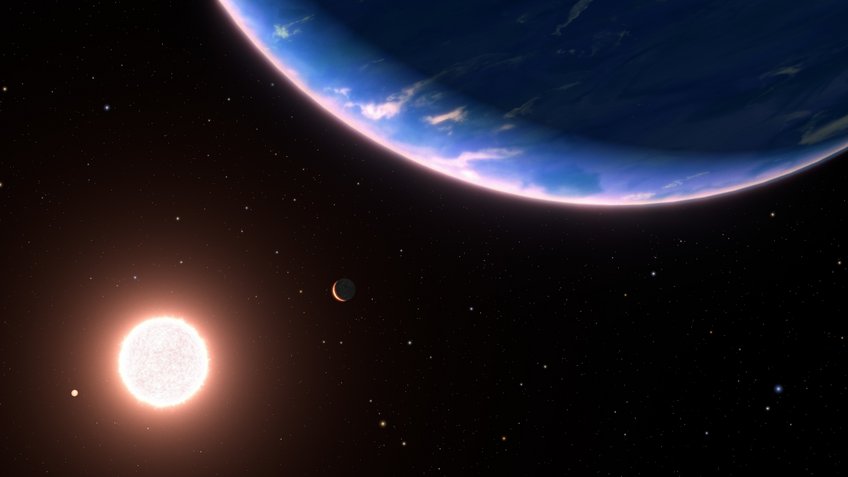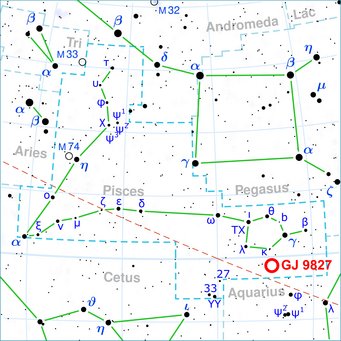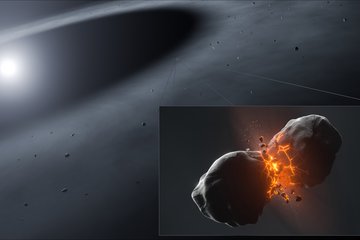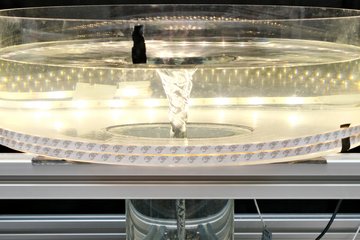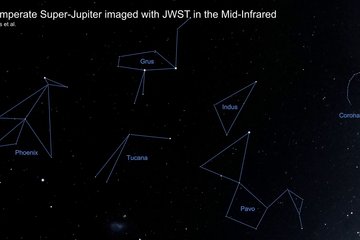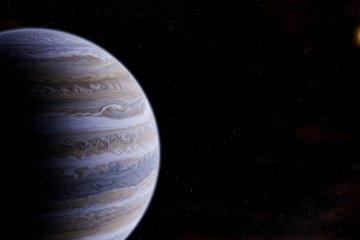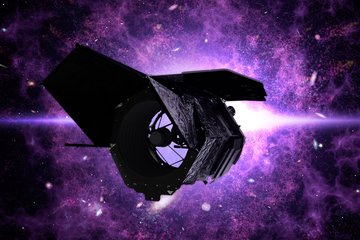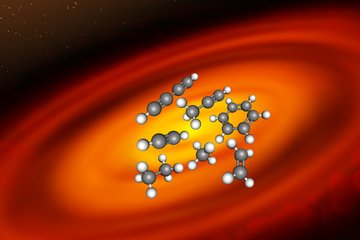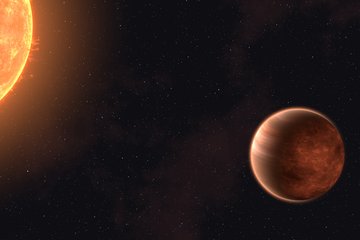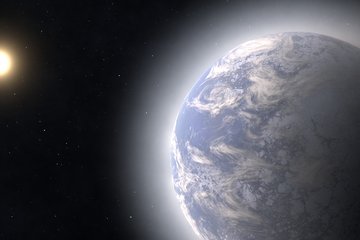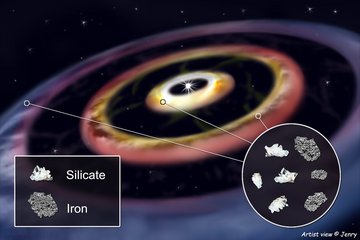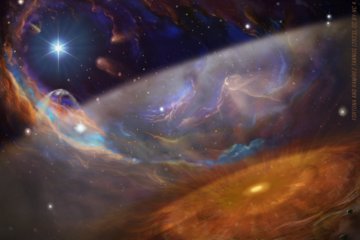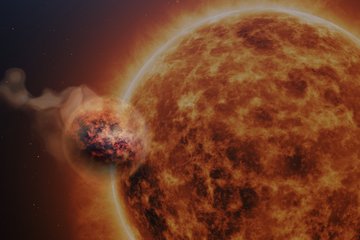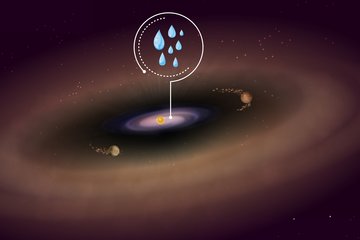Hubble finds water vapour in small exoplanet's atmosphere
Steamy world could be a sample of water-rich planets throughout our galaxy
Astronomers are intrigued when finding evidence of water vapour on exoplanets. Based on observations with the Hubble Space Telescope, a recent example is the planet GJ 9827d, which may have a water-rich atmosphere around it. Water is one of the most common molecules in the Universe, and all life on Earth requires it. It functions as a superior solvent and enables critical chemical reactions in biological cells. No bigger than twice Earth’s diameter, GJ 9827d could be an example of potential water-rich worlds elsewhere in our galaxy. But don’t plan on buying real estate there. The planet is as hot as Venus, which makes it a steamy world.
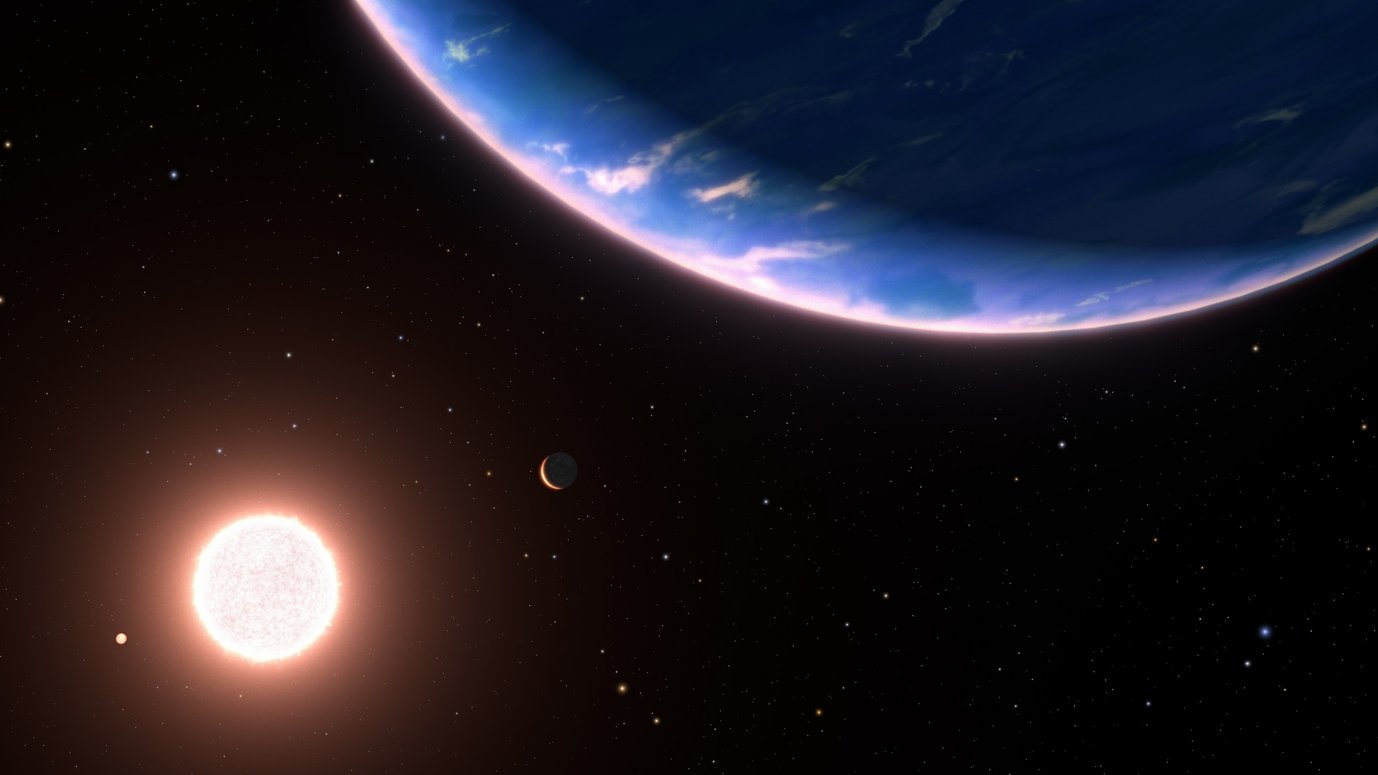
Using the Hubble Space Telescope (HST), astronomers, including Laura Kreidberg and Thomas Mikal-Evans from the Max Planck Institute for Astronomy (MPIA) in Heidelberg, Germany, observed the smallest exoplanet where scientists detected water vapour in the atmosphere. This planet, GJ 9872d, is located 97 light-years away in the constellation Pisces.
Water detected on the smallest exoplanet so far
“This would be the first time that we can directly show through atmospheric detection, that these planets with water-rich atmospheres can actually exist around other stars,” said team member Björn Benneke of the Trottier Institute for Research on Exoplanets at Université de Montréal, Canada. “This is an important step toward determining the prevalence and diversity of atmospheres on rocky planets.”
“Water on a planet this small is a landmark discovery,” added Laura Kreidberg, MPIA’s director of the APEx (Atmospheric Physics of Exoplanets) department. She is the co-principal investigator of the underlying HST observing program. “It pushes closer than ever to characterizing truly Earth-like worlds.”
However, it remains too early to tell whether Hubble spectroscopically measured a small amount of water vapour in a puffy hydrogen-rich atmosphere or if the planet’s atmosphere is mostly made of water, left behind after a primaeval hydrogen/helium atmosphere evaporated under stellar radiation.
Water world or hydrogen-rich mini-Neptune?
“Our observing program, led by principal investigator Ian Crossfield of Kansas University in Lawrence, Kansas, was designed specifically with the goal to not only detect the molecules in the planet’s atmosphere but to actually look specifically for water vapour. Either result would be exciting, whether water vapour is dominant or just a tiny species in a hydrogen-dominant atmosphere,” said the science paper’s lead author, Pierre-Alexis Roy of the Trottier Institute for Research on Exoplanets at Université de Montréal, Canada.
However, given its age of approximately six billion years and proximity to its host star, GJ 9872d should have lost most of its primordial hydrogen due to the intense irradiation, likely leaving behind an atmosphere dominated by water vapour. In addition, any attempt to detect hydrogen signatures failed so far.
“Until now, we had not been able to detect the atmosphere of such a small planet directly. And we’re slowly getting in this regime now,” added Benneke. “At some point, as we study smaller planets, there must be a transition where there’s no more hydrogen on these small worlds, and they have atmospheres more like Venus, which is dominated by carbon dioxide.”
A hot, inhospitable world
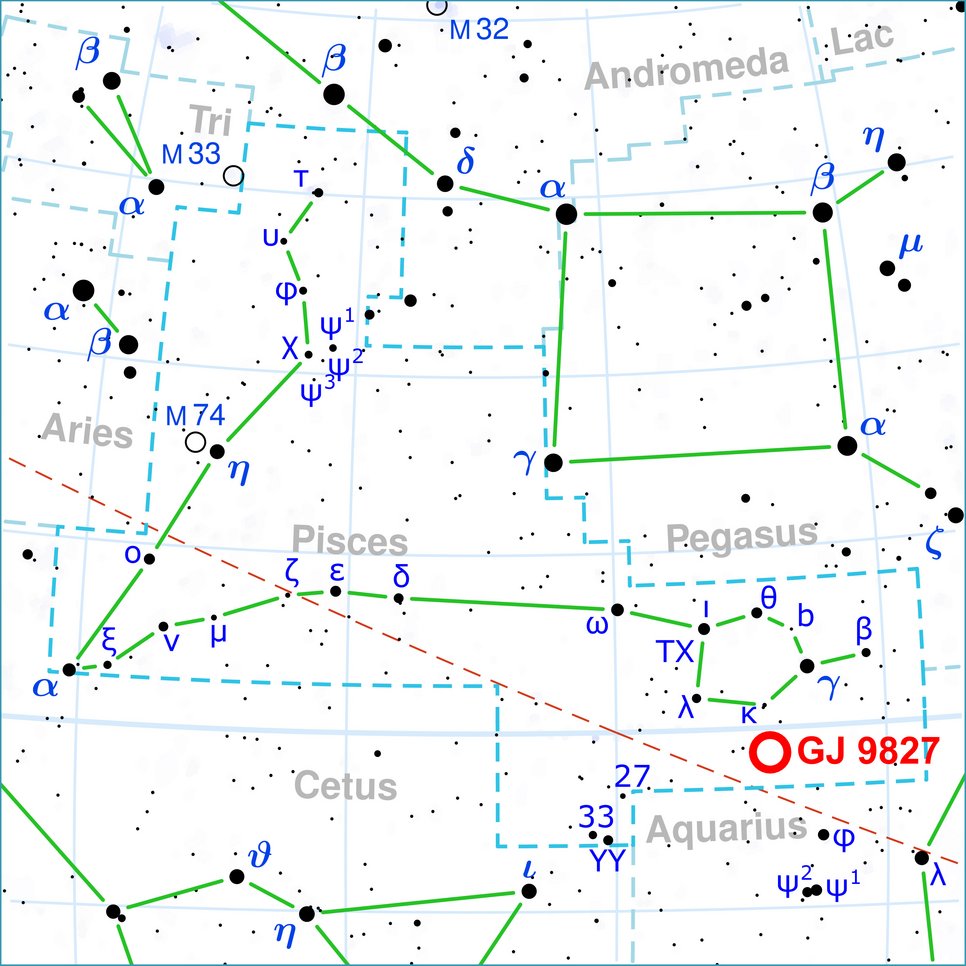
Because the planet is as hot as Venus, at 400 degrees Celsius, it definitely would be an inhospitable, steamy world if the atmosphere were predominantly water vapour.
At present, the team is left with two possibilities. The planet is still clinging to a hydrogen-rich envelope laced with water, making it a mini-Neptune. Alternatively, it could be a warmer version of Jupiter’s moon Europa, which has twice as much water as Earth beneath its crust. “The planet GJ 9827d could be half water, half rock. And there would be a lot of water vapour on top of some smaller rocky body,” said Benneke.
Suppose the planet has a residual water-rich atmosphere. In that case, it must have formed farther away from its host star, where the temperature is lower than at its present location and water is available as ice. In this scenario, the GJ 9827d would have migrated closer to the star and received more radiation, turning the ice into water and vapour. The hydrogen was heated and escaped or is still in the process of escaping the planet’s weak gravity. The alternative theory is that the planet formed close to the hot star, with a trace of water in its atmosphere.
A perfect target for Hubble and Webb
The Hubble program observed the planet during 11 transits – events in which it crossed in front of its star – spaced out over three years. During transits, starlight is filtered through the planet’s atmosphere and has the spectral fingerprint of water molecules. If there are clouds on the planet, they are low enough in the atmosphere to not hide Hubble’s view of the atmosphere completely, and the telescope can probe water vapour above the clouds.
Hubble’s discovery opens the door to studying the planet in more detail. Therefore, astronomers, including those from MPIA, have recently observed GJ 9827d with the James Webb Space Telescope. They looked for water signatures and other molecules in more detail. “We can hardly wait to see what those data reveal,” Kreidberg says. “Hopefully, we can now settle the question of water worlds once and for all.”
Additional information
The MPIA researchers involved in this study are Laura Kreidberg (co-principal investigator) and Thomas Mikal-Evans.
Other contributors are: Pierre-Alexis Roy (Department of Physics and Trottier Institute for Research on Exoplanets, Université de Montréal, Montreal, Canada [UM]), Björn Benneke (UM), Caroline Piaulet (UM), Michael A. Gully-Santiago (Department of Astronomy, University of Texas at Austin, Austin, USA [UTA]), Ian J. M. Crossfield (Principal investigator, Department of Physics and Astronomy, University of Kansas, Lawrence, USA [KU]), Caroline V. Morley (UTA), Jonathan Brande (KU), Simon Delisle (UM), Thomas P. Greene (Space Science and Astrobiology Division, NASA Ames Research Center, Moffett Field, USA), Kevin K. Hardegree-Ullman (Steward Observatory, The University of Arizona, Tucson, USA), Travis Barman (Lunar and Planetary Laboratory, The University of Arizona, Tucson, USA), Jessie L. Christiansen (Caltech/IPAC, Pasadena, USA), Diana Dragomir (Department of Physics and Astronomy, University of New Mexico, Albuquerque, USA), Jonathan J. Fortney (Department of Astronomy & Astrophysics, University of California, Santa Cruz, USA [UCSC]), Andrew W. Howard (Department of Astronomy, California Institute of Technology, Pasadena, USA), Molly R. Kosiarek (UCSC), and Joshua D. Lothringer (Department of Physics, Utah Valley University, Orem, USA)
GJ 9827d was discovered by NASA’s Kepler Space Telescope in 2017. It completes an orbit around a red dwarf star every 6.2 days. The star, GJ 9827, lies 97 light-years from Earth in the constellation Pisces.
The Hubble Space Telescope is a project of international cooperation between NASA and ESA. NASA’s Goddard Space Flight Center in Greenbelt, Maryland, manages the telescope.
JWST is the world’s premier space science observatory. It is an international program led by NASA with its partners, ESA (European Space Agency) and CSA (Canadian Space Agency).
This press release was adapted from the original by the Space Telescope Science Institute (STScI).
